Abstract
1. In anaesthetized, paralysed and artificially ventilated cats, recordings have been made in the nucleus tractus solitarii (NTS) to assess further the role of this nucleus in mediating the cardiorespiratory responses that are elicited on stimulation within the hypothalamic defence area (HDA). 2. The responses of NTS neurones to stimulation in the hypothalamus were assessed, as were their patterns of evoked response to electrical stimulation of the sinus (SN), aortic (AN), superior laryngeal (SLN) and vagus (VN) nerves. 3. Stimulation in the HDA affected the activity of 110 NTS neurones (85 studied in intracellular and 25 studied in extracellular recordings). The present study focused on those sixty-eight neurones that were excited by such stimulation (51 intracellular recordings and 17 extracellular recordings). 4. Of the sixty-eight neurones that were excited by HDA stimulation, seven revealed no changes in membrane potential or evoked discharge (2 neurones) but the stimulus facilitated the excitatory effects of stimulating either (or both) the SN and SLN. An additional group of neurones showed powerful excitatory responses to HDA stimulation (15 studied with extracellular and 35 with intracellular recording). Evoked EPSPs had onset latencies in the range of 1-30 ms. Of those thirty-five neurones displaying EPSPs, twenty-six were shown to receive convergent inputs on nerve stimulation. In nine neurones the early EPSP in response to HDA stimulation was followed by an IPSP. 5. In a further group of neurones HDA stimulation elicited a long-lasting IPSP, but this was not analysed further because its features have been described in detail in earlier studies from this laboratory. 6. The patterns of response of several neurones excited by stimulation in the HDA are consistent with them forming a group of NTS interneurones that mediate the hypothalamically evoked cardiovascular responses, including modulation of reflex function, which is a major feature of cardiorespiratory control. This possibility is discussed in the light of the present physiological observations and descriptions of an intrinsic NTS group of GABA-containing neurones that have been suggested to fulfil such a role.
Full text
PDF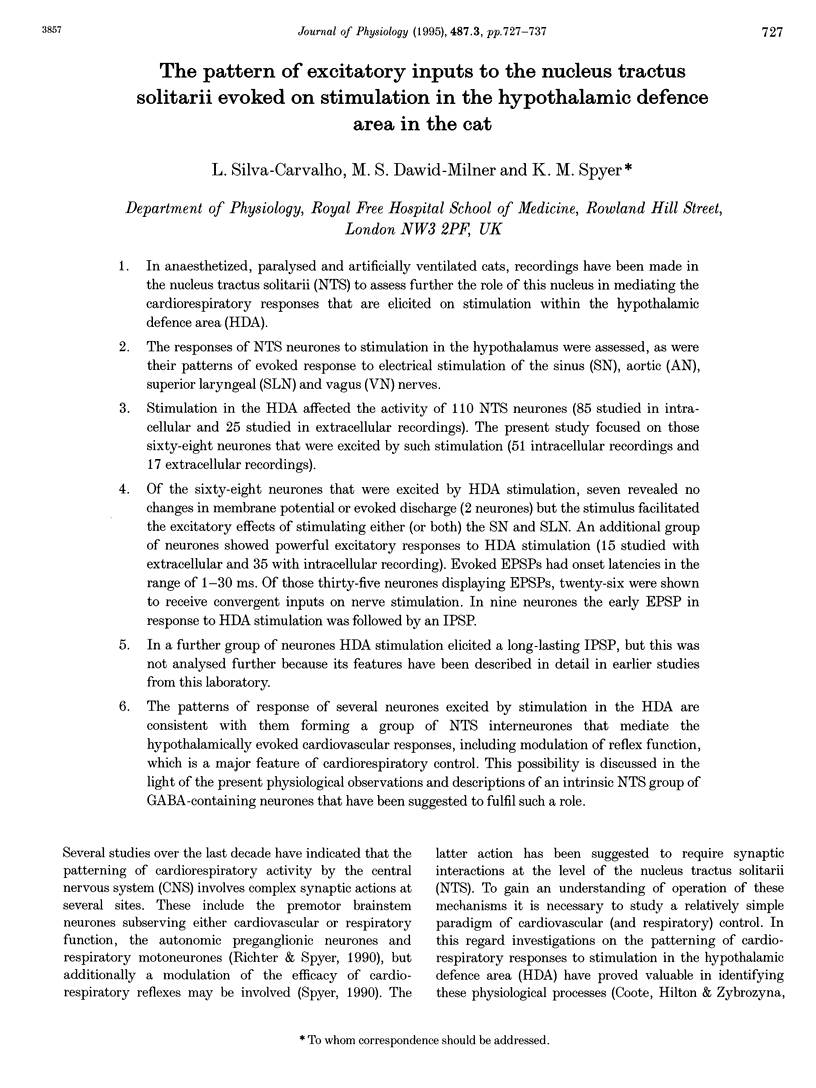
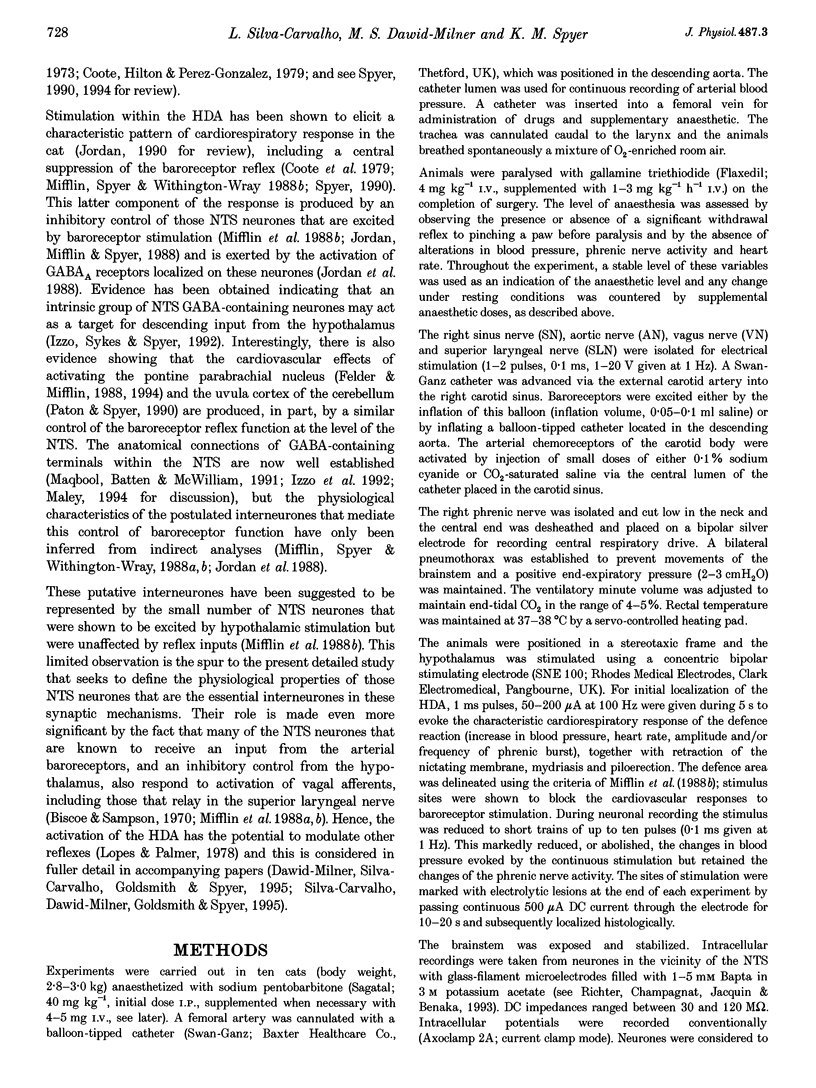
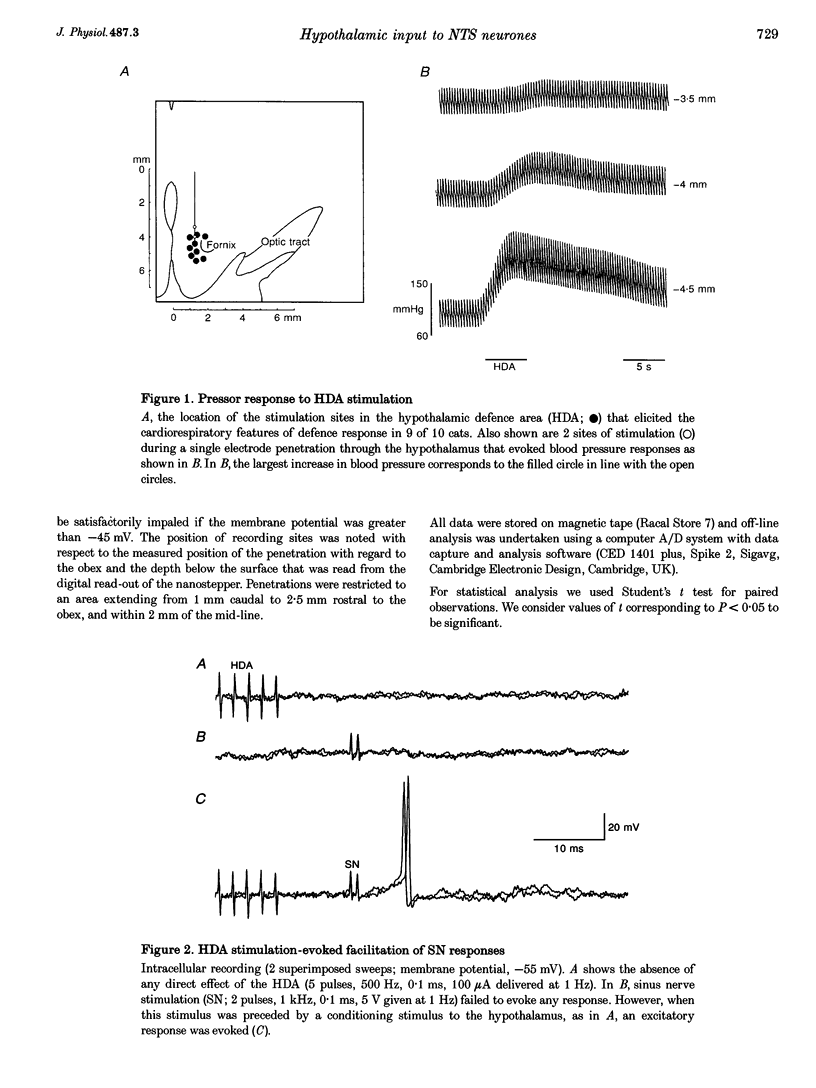
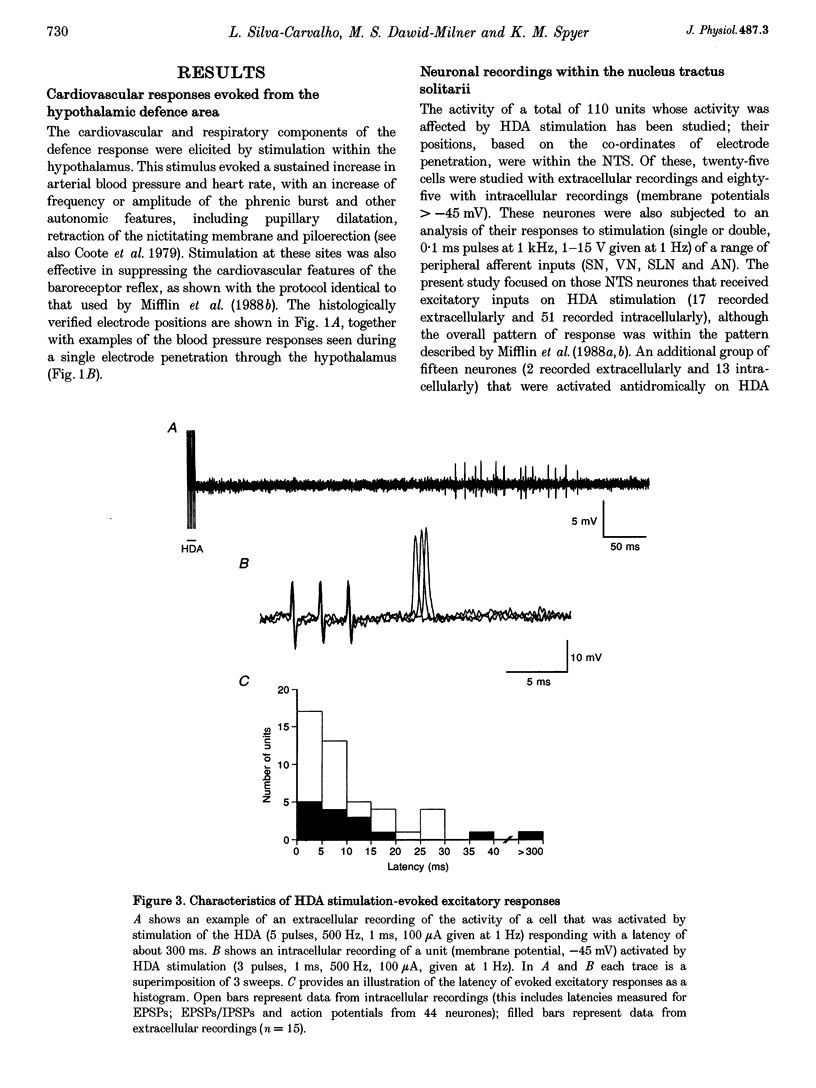
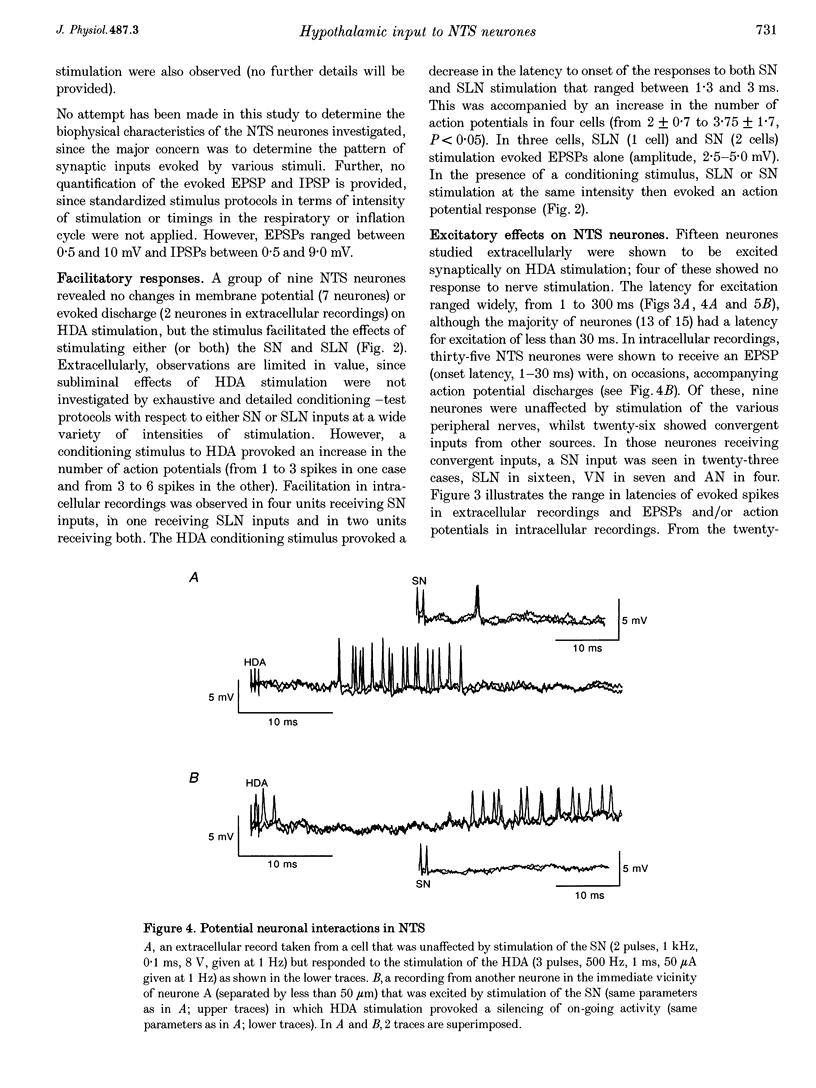
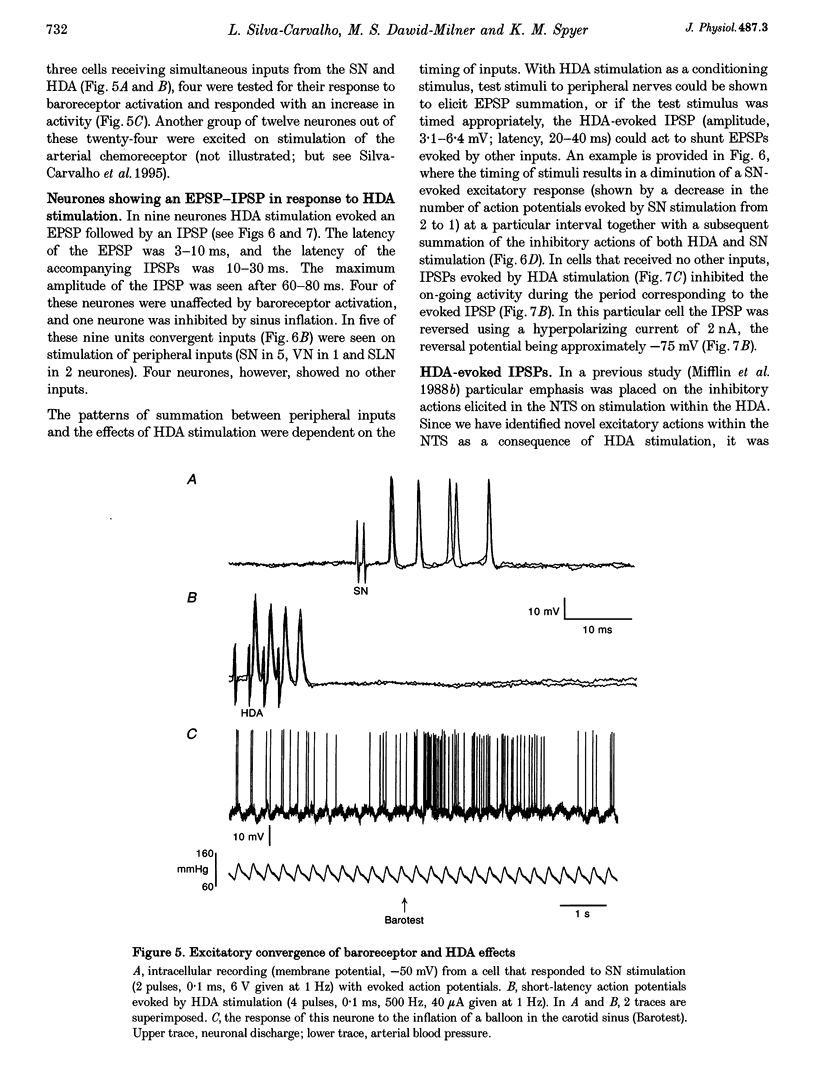
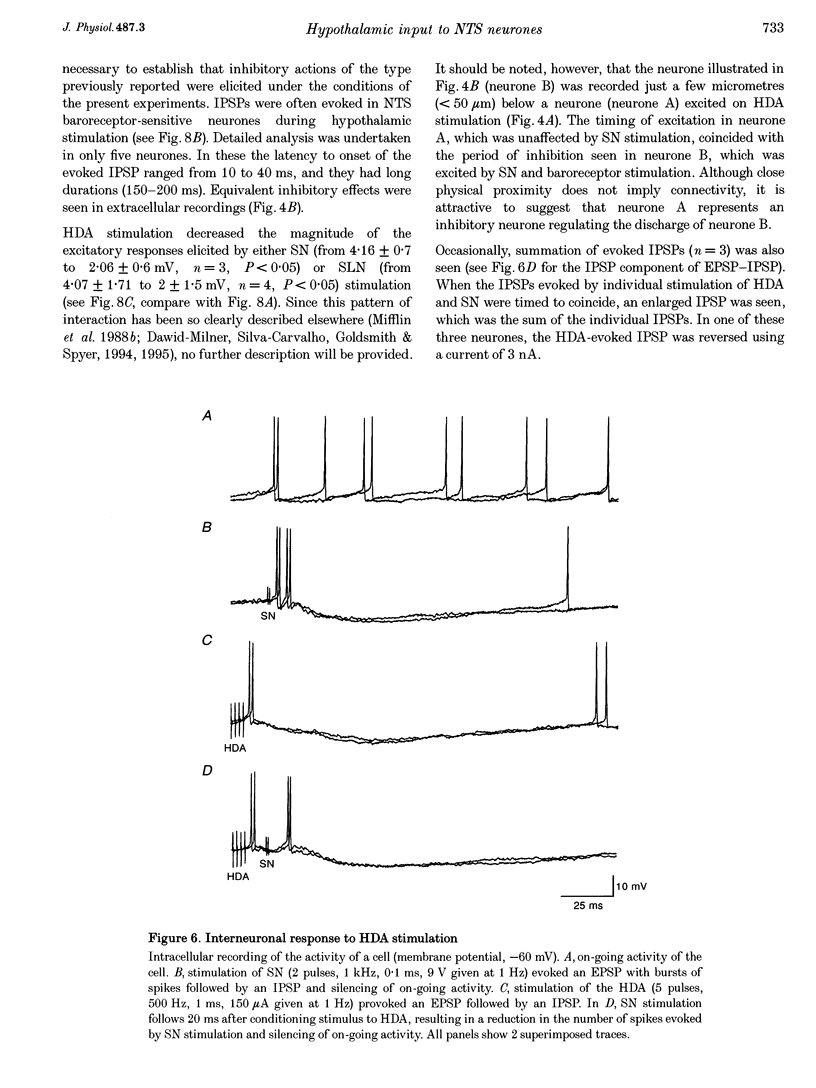
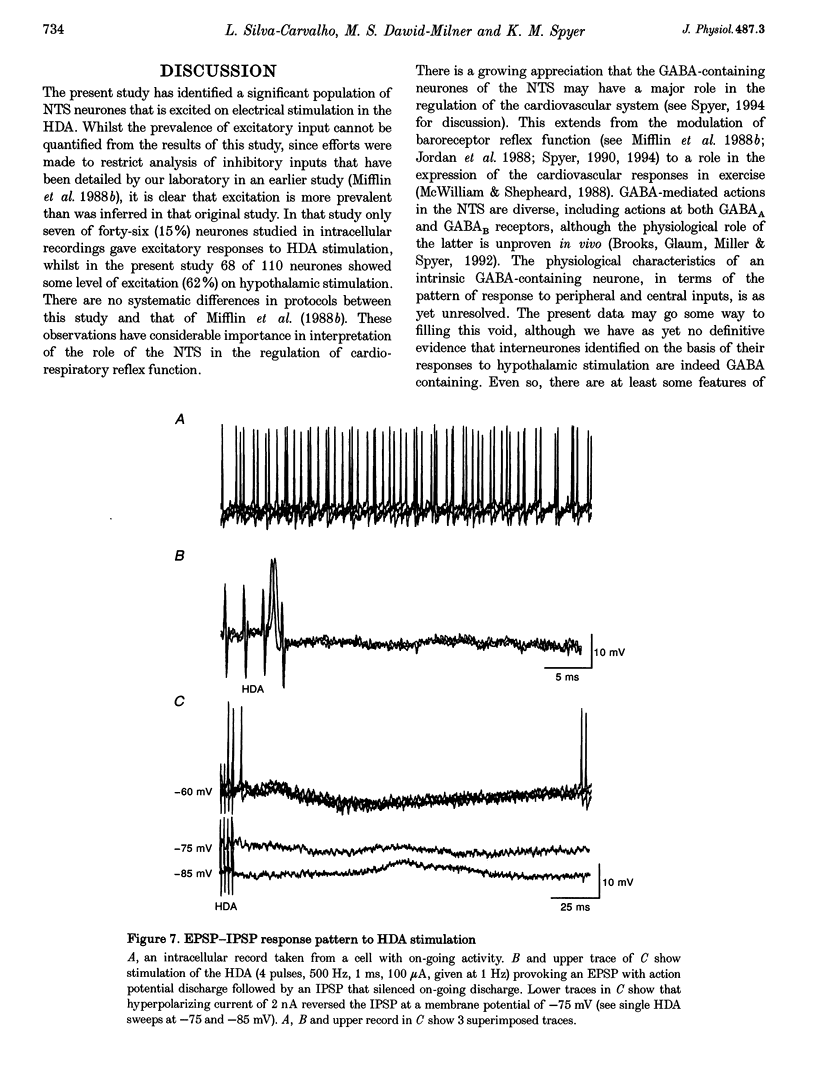
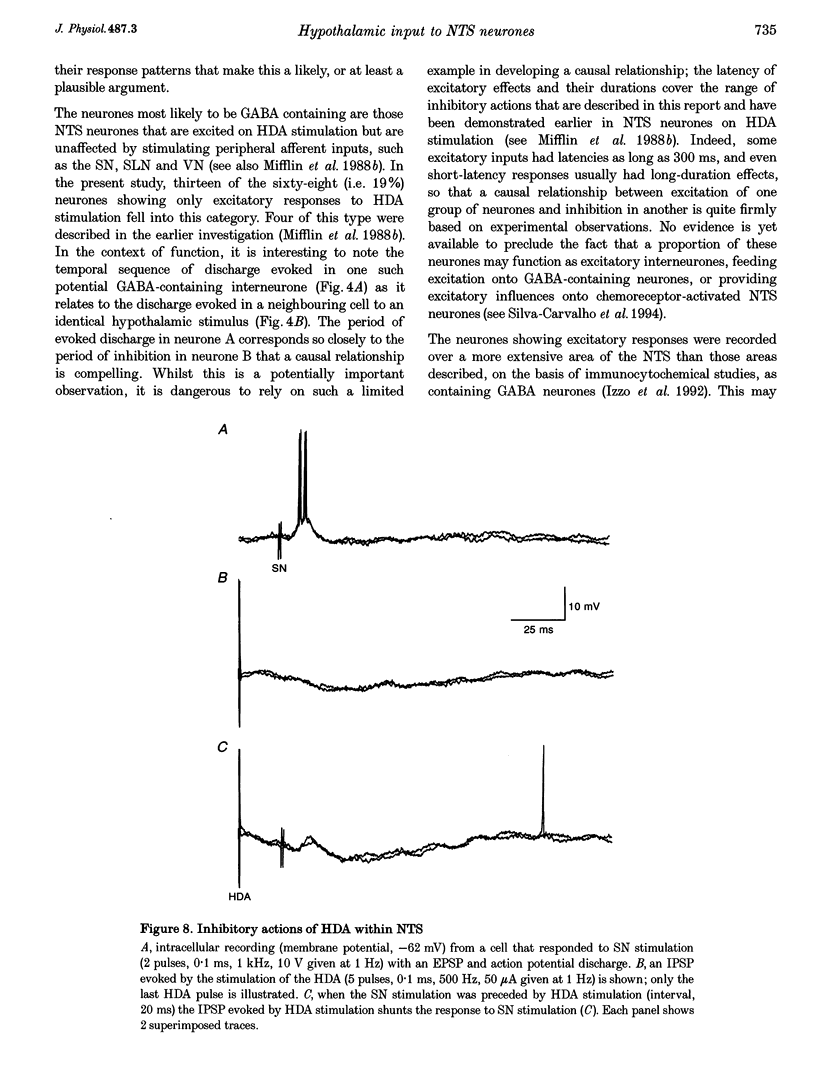
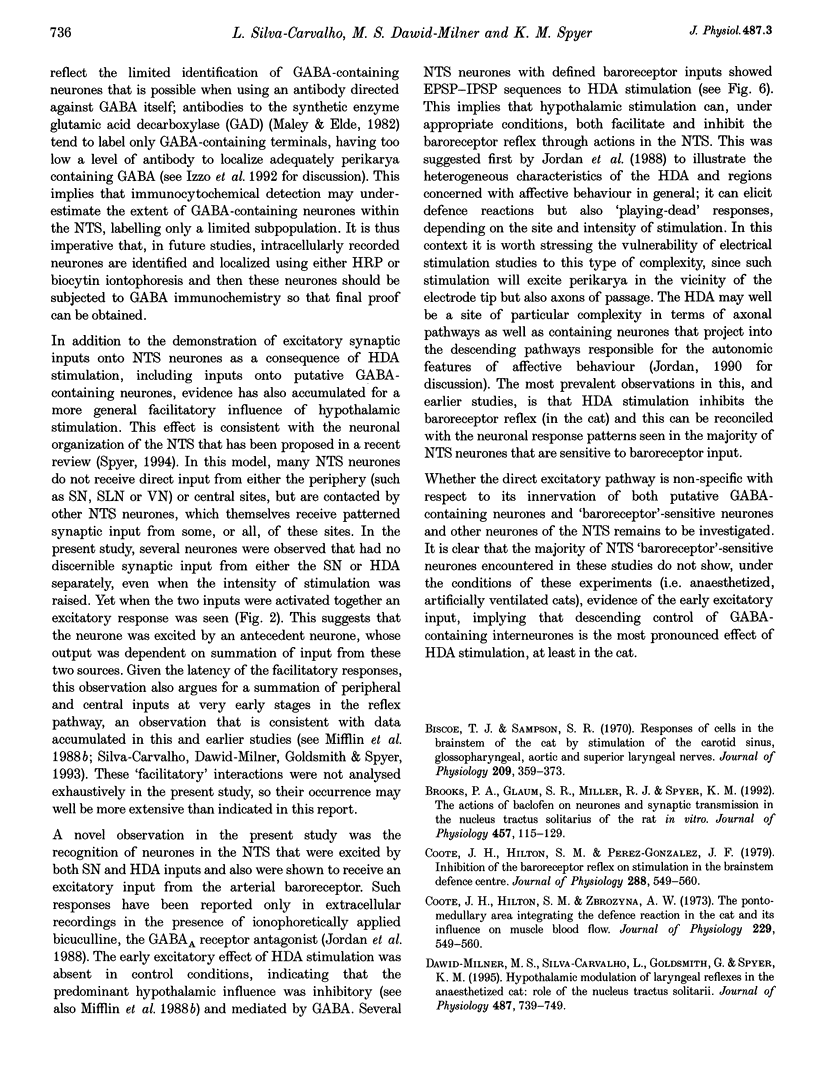
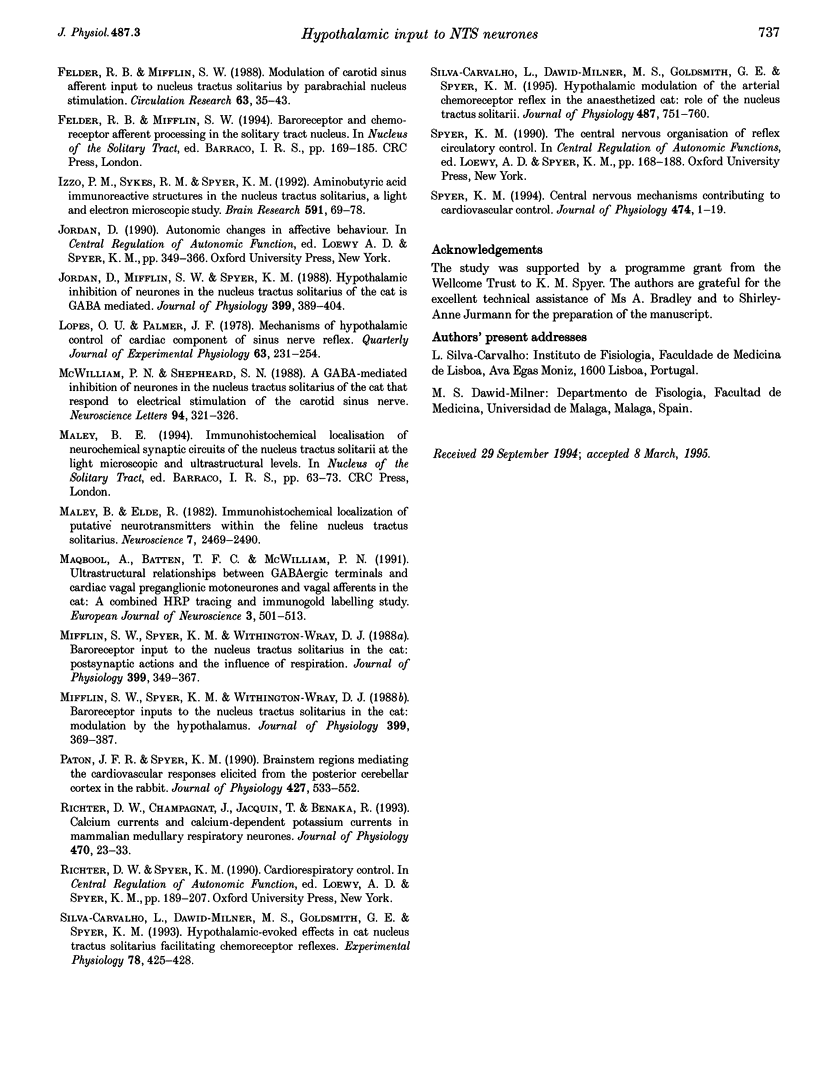
Selected References
These references are in PubMed. This may not be the complete list of references from this article.
- Biscoe T. J., Sampson S. R. Responses of cells in the brain stem of the cat to stimulation of the sinus, glossopharyngeal, aortic and superior laryngeal nerves. J Physiol. 1970 Aug;209(2):359–373. doi: 10.1113/jphysiol.1970.sp009169. [DOI] [PMC free article] [PubMed] [Google Scholar]
- Brooks P. A., Glaum S. R., Miller R. J., Spyer K. M. The actions of baclofen on neurones and synaptic transmission in the nucleus tractus solitarii of the rat in vitro. J Physiol. 1992 Nov;457:115–129. doi: 10.1113/jphysiol.1992.sp019367. [DOI] [PMC free article] [PubMed] [Google Scholar]
- Coote J. H., Hilton S. M., Perez-Gonzalez J. F. Inhibition of the baroreceptor reflex on stimulation in the brain stem defence centre. J Physiol. 1979 Mar;288:549–560. [PMC free article] [PubMed] [Google Scholar]
- Dawid-Milner M. S., Silva-Carvalho L., Goldsmith G. E., Spyer K. M. Hypothalamic modulation of laryngeal reflexes in the anaesthetized cat: role of the nucleus tractus solitarii. J Physiol. 1995 Sep 15;487(Pt 3):739–749. doi: 10.1113/jphysiol.1995.sp020914. [DOI] [PMC free article] [PubMed] [Google Scholar]
- Felder R. B., Mifflin S. W. Modulation of carotid sinus afferent input to nucleus tractus solitarius by parabrachial nucleus stimulation. Circ Res. 1988 Jul;63(1):35–49. doi: 10.1161/01.res.63.1.35. [DOI] [PubMed] [Google Scholar]
- Izzo P. N., Sykes R. M., Spyer K. M. gamma-Aminobutyric acid immunoreactive structures in the nucleus tractus solitarius: a light and electron microscopic study. Brain Res. 1992 Sep 18;591(1):69–78. doi: 10.1016/0006-8993(92)90979-j. [DOI] [PubMed] [Google Scholar]
- Jordan D., Mifflin S. W., Spyer K. M. Hypothalamic inhibition of neurones in the nucleus tractus solitarius of the cat is GABA mediated. J Physiol. 1988 May;399:389–404. doi: 10.1113/jphysiol.1988.sp017087. [DOI] [PMC free article] [PubMed] [Google Scholar]
- Lopes O. U., Palmer J. F. Mechanism of hypothalamic control of cardiac component of sinus nerve reflex. Q J Exp Physiol Cogn Med Sci. 1978 Jul;63(3):231–254. doi: 10.1113/expphysiol.1978.sp002438. [DOI] [PubMed] [Google Scholar]
- Maley B., Elde R. Immunohistochemical localization of putative neurotransmitters within the feline nucleus tractus solitarii. Neuroscience. 1982 Oct;7(10):2469–2490. doi: 10.1016/0306-4522(82)90208-1. [DOI] [PubMed] [Google Scholar]
- Maqbool Azhar, Batten Trevor F. C., McWilliam Peter N. Ultrastructural Relationships Between GABAergic Terminals and Cardiac Vagal Preganglionic Motoneurons and Vagal Afferents in the Cat: A Combined HRP Tracing and Immunogold Labelling Study. Eur J Neurosci. 1991 Jun;3(6):501–513. doi: 10.1111/j.1460-9568.1991.tb00837.x. [DOI] [PubMed] [Google Scholar]
- McWilliam P. N., Shepheard S. L. A GABA-mediated inhibition of neurones in the nucleus tractus solitarius of the cat that respond to electrical stimulation of the carotid sinus nerve. Neurosci Lett. 1988 Dec 5;94(3):321–326. doi: 10.1016/0304-3940(88)90038-9. [DOI] [PubMed] [Google Scholar]
- Mifflin S. W., Spyer K. M., Withington-Wray D. J. Baroreceptor inputs to the nucleus tractus solitarius in the cat: modulation by the hypothalamus. J Physiol. 1988 May;399:369–387. doi: 10.1113/jphysiol.1988.sp017086. [DOI] [PMC free article] [PubMed] [Google Scholar]
- Mifflin S. W., Spyer K. M., Withington-Wray D. J. Baroreceptor inputs to the nucleus tractus solitarius in the cat: postsynaptic actions and the influence of respiration. J Physiol. 1988 May;399:349–367. doi: 10.1113/jphysiol.1988.sp017085. [DOI] [PMC free article] [PubMed] [Google Scholar]
- Paton J. F., Spyer K. M. Brain stem regions mediating the cardiovascular responses elicited from the posterior cerebellar cortex in the rabbit. J Physiol. 1990 Aug;427:533–552. doi: 10.1113/jphysiol.1990.sp018186. [DOI] [PMC free article] [PubMed] [Google Scholar]
- Richter D. W., Champagnat J., Jacquin T., Benacka R. Calcium currents and calcium-dependent potassium currents in mammalian medullary respiratory neurones. J Physiol. 1993 Oct;470:23–33. doi: 10.1113/jphysiol.1993.sp019844. [DOI] [PMC free article] [PubMed] [Google Scholar]
- Silva-Carvalho L., Dawid-Milner M. S., Goldsmith G. E., Spyer K. M. Hypothalamic modulation of the arterial chemoreceptor reflex in the anaesthetized cat: role of the nucleus tractus solitarii. J Physiol. 1995 Sep 15;487(Pt 3):751–760. doi: 10.1113/jphysiol.1995.sp020915. [DOI] [PMC free article] [PubMed] [Google Scholar]
- Silva-Carvalho L., Dawid-Milner M. S., Goldsmith G. E., Spyer K. M. Hypothalamic-evoked effects in cat nucleus tractus solitarius facilitating chemoreceptor reflexes. Exp Physiol. 1993 May;78(3):425–428. doi: 10.1113/expphysiol.1993.sp003696. [DOI] [PubMed] [Google Scholar]
- Spyer K. M. Annual review prize lecture. Central nervous mechanisms contributing to cardiovascular control. J Physiol. 1994 Jan 1;474(1):1–19. doi: 10.1113/jphysiol.1994.sp019997. [DOI] [PMC free article] [PubMed] [Google Scholar]


